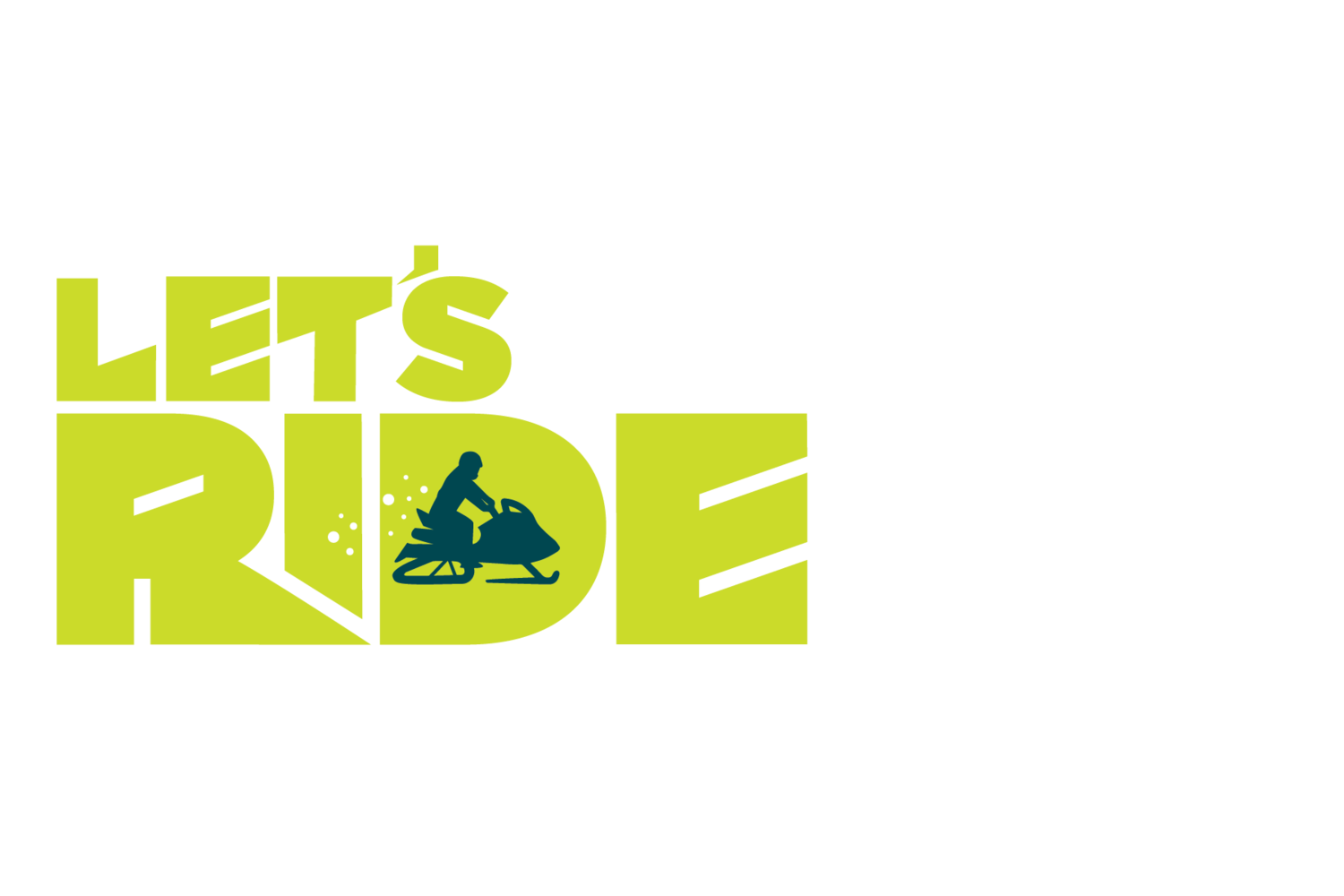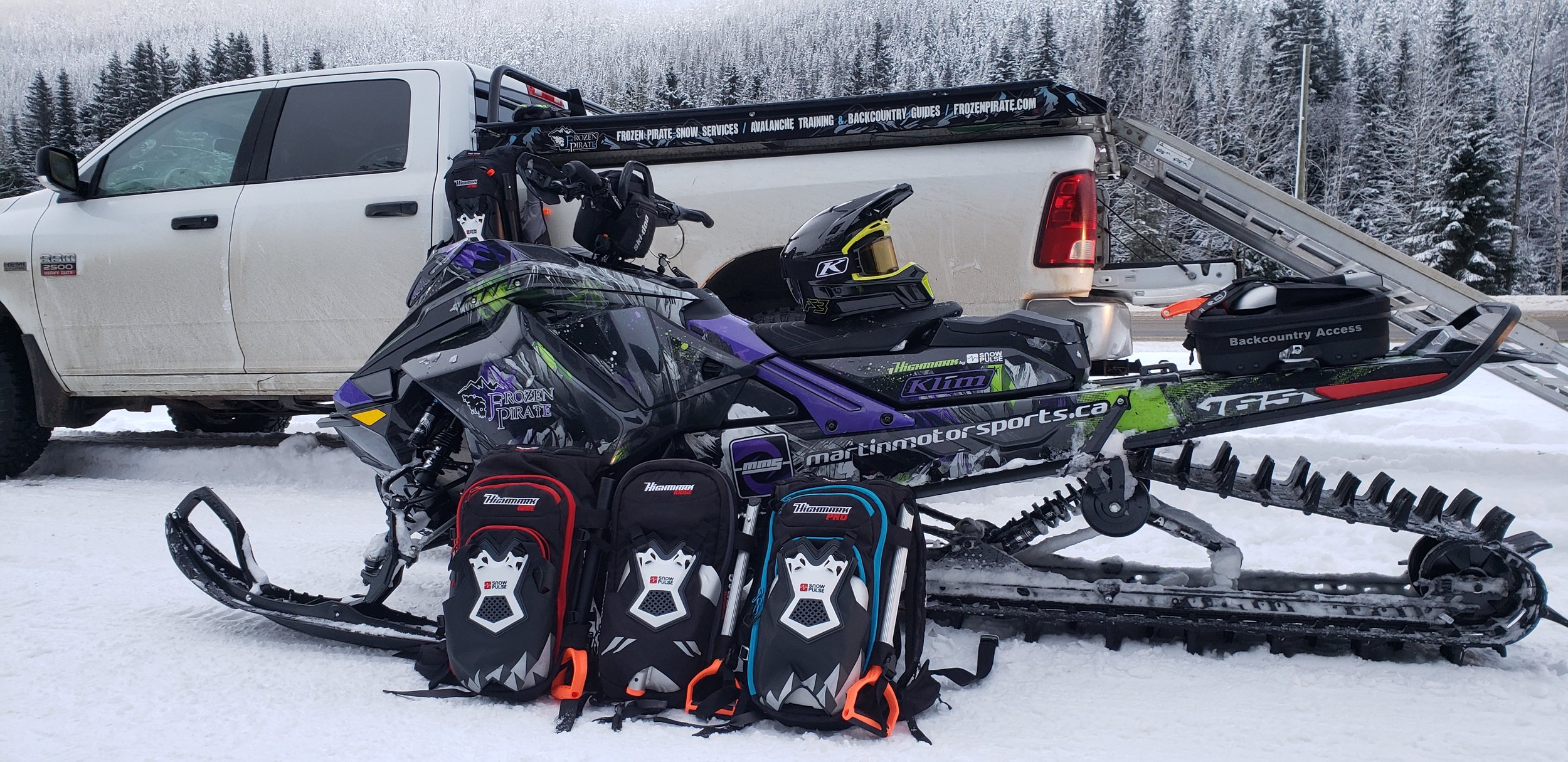BACK IN THE SADDLE
A PRIMER FOR THOSE RETURNING TO SLEDDING
Life happens. Our goals and priorities can change from one year to the next. Sometimes we must drop hobbies or activities that we love for other passions including family, careers, schooling, health or just simply to try something else.
But lucky you! You have decided to get back into sledding, now what?
A secret stash in the Allan Creek riding area, Valemount BC
Depending how long you have been out of the game, there have likely been some significant changes to our industry. Changes to the machines, equipment and even riding locations, that you may or may not be aware of can all affect your first steps back into the game. Don’t fret; getting reacquainted with this long-lost love is going to be half of the fun.
If you know me or my company, we are all about riding hard, but doing it safely. There are several styles of sledding, but here, we are going to focus on mountain sledding.
Allan Creek looking towards Super Bowl, Valemount BC
UPDATE YOUR MENTAL TOOLBOX
The first essential stop first stop is to update your mental toolbox by perusing the Avalanche Canada website. The site has a wealth of information and resources. I would recommend starting with the online avalanche tutorial known as AvySavvy. Get familiar with your avalanche bulletin region, start following the weather in your area by reading the Mountain Weather Forecast. Take a look at the Mountain Information Network (MIN) posts within your local zones to get the most recent info on current conditions and what other riders are seeing out there. Also consider looking into an Avalanche Skills Training level 1 course or even a refresher if you had taken it several years ago. Even practicing with your friends in the backyard or local school field will go a long way in re-establishing your skills with a transceiver, shovel and probe.
NOW LET’S TALK ABOUT GEAR
There has likely also been some major changes in technology and the gear that is recommended you carry throughout the day. These items can mean the difference between a miserable or comfortable night on the mountain, or even worse, life and death.
The most important items are certainly a digital three-antenna avalanche transceiver, a quality avalanche shovel, a three-meter-long avalanche probe and a quality radio. All of these items are a must have for every member of your group. But just having them is not good enough; you need to know how to use them. An avalanche airbag is an optional piece of equipment that can reduce the chance of burial in the event of an avalanche. While proven effective, these are costly, and I strongly recommend investing first in training and practice if your resources are limited. Also remember that renting these items is most likely possible in your local community and renting is an affordable option, as you dip your toes back into the snowpack.
It is highly recommended that at least one person in your small riding group carries a device capable of outside communication in an event three is no cell service, and that each person is trained on using it and knows its stored location. These devices are satellite linked and can be used to communicate with outside parties for check-ins or in the event of an emergency where help is needed.
There are many articles out there on other items to carry with you on your sled and in your backpack and I leave that up to you to research a bit. These include emergency overnight gear, spare clothes, food, water, tools, fire starter and the list goes on and on. A Search and Rescue Team Leader I know said some great words of wisdom.
“As a mountain snowmobiler you must be prepared to spend at least one night alone in the wilderness every time you leave the parking lot. You owe that to your family”
NOW THAT YOU HAVE REFRESHED YOUR KNOWLED ON SAFETY AND GEAR, WHAT’S NEXT?
I would first recommend reaching out to your local snowmobile club if you have one. Purchasing a membership and volunteering to help out are great ways to get to know other riders in your area while supporting the sport you are returning to. Your local club is a knowledgeable resource for local riding area information such as trail fees, day passes, possible motorized closures areas, and mapping resources for your trail systems. LetsRideBC and the British Columbia Snowmobile Federation just created and amazing new provincial trail map that will certainly be a great help in planning your next ride.
Snowmobiling in BC has a very long history of volunteer club involvement and many of areas and trail systems are operated solely on the hard work and sweat of volunteers. Be sure to become a partner in this sport, be a giver, not just a taker.
YOUR FIRST RIDE BACK
So, you have found a few riders you trust and are willing to take you out for your first day back, awesome! It’s important that you are honest with them about your skill levels and expectations for that first day on the mountain. Believe me here, honesty is the best policy, and it will result in everyone having a positive day.
Take the time to re-learn the techniques of riding a sled in the mountains. Ask for help and advice from experienced riders. I have seen the largest humans struggle to maneuver a sled and be tired out by 10am, while a 120lb person with good technique can carve mountain lines all day.
Start small by choosing simple terrain or trails to get your sled legs back. You are likely on a machine that is new to you, with new gear, in new terrain and with new friends. Keep the objectives small and reasonable. Just go out with the intent of finding some gentle terrain and fresh snow to practice your skills on before going all in on the big mountain trip with the experienced crew from work.
CONGRATULATIONS!
Day 1 back was a success! It is guaranteed that there were some stucks, struggles, big breaths and maybe a cuss word or two, but you did it. You experienced some amazing scenery and epic terrain that very few people actually get to experience and likely re-ignited your love for sledding. You’re going to be sore tomorrow, but you have just begun to re-live the joys and positive vibes from British Columbia’s amazing snowmobile community.
Curtis Pawliuk is the owner and operator of Frozen Pirate Snow Services, an avalanche safety training and professional snowmobile guiding company operated in Valemount BC as well as the General Manager of the Valemount and Area Recreation Development Association (VARDA). He is also a Professional Member of the Canadian Avalanche Association, sits on the Board of Directors of Avalanche Canada and the BC Snowmobile Federation, along with being on the Robson Valley Search and Rescue Team.OTHER RESOURCES TO HELP GET YOU BACK INTO SLEDDING
PLAN YOUR VISIT
Catch up on the latest rules and regulations for riding in BC, purchase trail passes or memberships, find new places to ride, learn more about backcountry safety and more in our online quick reference guide.











